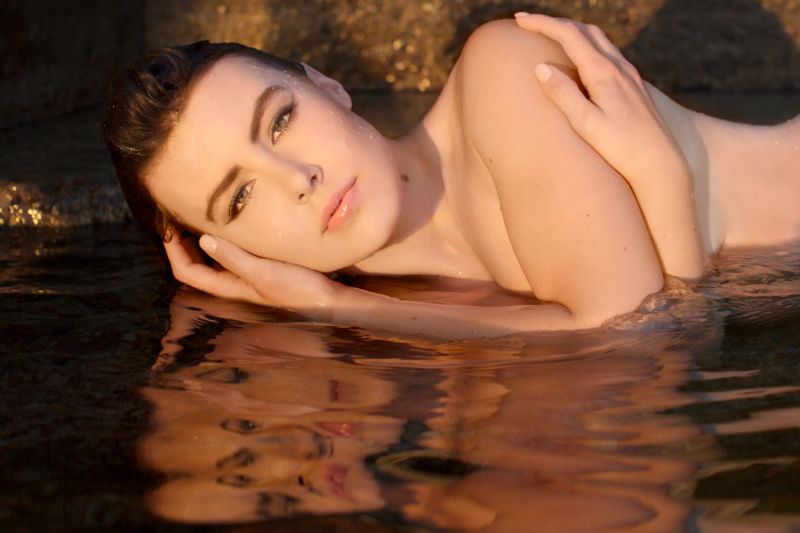
I used to be terrified to shoot in harsh sunlight. I avoided it like the plague, and as a consequence avoided scheduling sessions in anything other than golden hour or overcast days. I soon found out that a limited availability such as this was a financial burden, thus, bad for business. This was the deciding factor to embrace working in harsh sunlight.
Several photographers have written amazing books about overcoming such obstacles, and I highly recommend reading them and putting their shared knowledge into practice. Being in Montana and having a sporadic work schedule, I often found it difficult to put an entire team together for a shoot, and was often a one woman show. Therefore, the gear I used was very minimal as I did not trust a light not to fall and break without having someone there to man the post.
This first portrait was captured about an hour before golden hour in late July. The angle and the color cast of the sun beaming through the buildings downtown was spectacular. The only tweak I made was to have the model turn away from the sun ever so slightly to give more definition to her cheekbone.

Gear: Canon 5D Mark III, Canon 85mm 1.2L II
Settings: ISO 100, f/2.8, 1/2500 of a second.
City sidewalks and the glass of buildings can often double as reflectors. This next set of images were taken just outside of Penn Station on a late August afternoon.
For the first example, I started by lighting the model with the direct light to get the contrast where I liked it. The surrounding buildings bounced light into the background, illuminating an otherwise boring shadow.

Gear: Canon 5D Mark III, Canon 85mm 1.2L II
Settings: ISO 100, f/2.8, 1/1600 of a second.
In the second image, I used the reflection of the buildings to act as a reflector to fill in the shadows on the model’s face rather than the background. This would have been a perfect opportunity to fire up an off camera flash or utilize a reflector to perfect the light for those that don’t prefer shadows.

Gear: Canon 5D Mark III, Canon 85mm 1.2L II
Settings: ISO 100, f/2.8, 1/2000 of a second.
High noon in the summertime was particularly frightening for me; I could hear the words rattling over in my head to never photograph like this. However, it was perfect for the swimsuit image that we were trying to get. Having the sun directly overhead created a beautiful gradation that could be seen once I changed my vantage point.

Gear: Canon 5D Mark III, Canon 50mm 1.2L
Settings: ISO 100, f/8, 1/1250 of a second.
I was once told that women should never be photographed with a lot of shadows as it is unflattering, and split lighting is supposed to be even worse. Knowing that this was going to be less than ideal, we did it anyway and this was photographed in the early March afternoon while in Montana. I had very little space to work with on the dock and found that the split lighting was the most interesting of all the options I had to work with. The drama that was created with the falloff from the shadows evoked a mood that we could work with.

Gear: Canon 5D Mark III, Canon 50mm 1.2L
Settings: ISO 100, f/8, 1/400 of a second.
The final example showcases why golden hour is so ideal. This was taken just moments before sunset in late August, and I love the warmth of the highlights and coolness of the shadows. The sun was setting on the lake and was nearly parallel to the model. The only thing I did was place the model directly in line with the sun and hoped that I didn’t drop my camera into the lake.

Gear: Canon 5D Mark III, Canon 50mm 1.2L
Tech Specs: ISO 400, f/4, 1/800 of a second.
The edits: The edits were very minimal. I use very light frequency separation for any blemishes.
Conclusion
Shooting in direct sunlight can be as rewarding as it can be challenging. When everything is optimal, it is beautiful. However, it isn’t always possible to shoot in perfect light when dealing with the sun, so choosing how we manipulate it in these instances can help us find our voice. As artists, we are taught that there are a set number of rules that we must adhere to, but I think it is how we choose to break those rules and when we choose to apply them that sets us apart as individuals.





Get Connected!